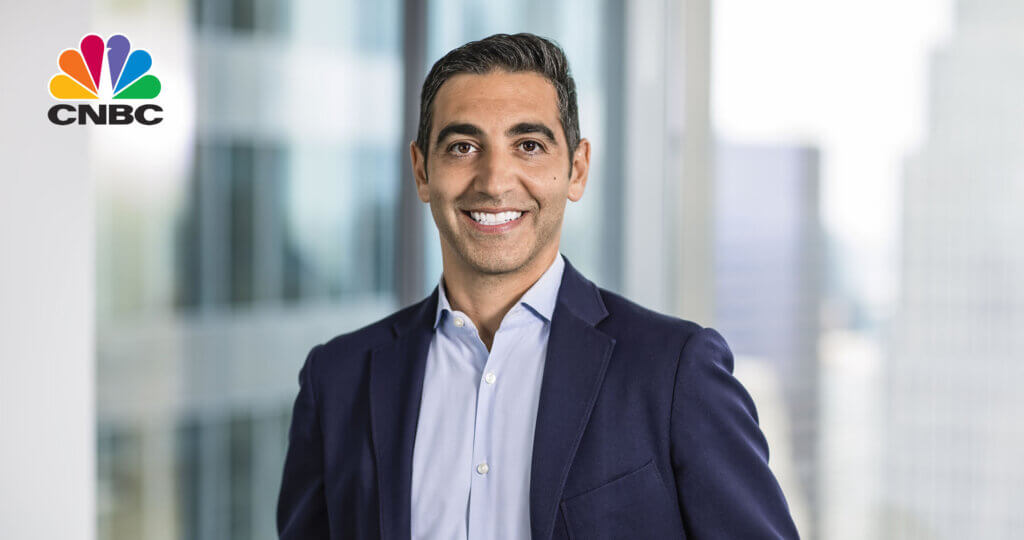“A central question for boards: Where should the company allocate its capital for the best outcome in years ahead?”
-Dambisa Moyo, How Boards Work1
At Oakmark, we are long-term investors. We attempt to identify growing businesses that are managed to benefit their shareholders. We will purchase stock in those businesses only when priced substantially below our estimate of intrinsic value. After purchase, we patiently wait for the gap between stock price and intrinsic value to close.
ESG (Environmental, Social and Governance) has recently become one of the hottest topics in investing. Oakmark’s thinking on ESG probably differs from what you’ve read: We don’t offer ESG strategy funds because to us, these factors, along with many others, have always been an integral part of good long-term value investing. In this commentary, I’ll cover Oakmark’s thoughts on governance in relation to our Funds’ selection of undervalued stocks. Governance is a back-burner issue for investors who trade their portfolios frequently. When you only hold a stock for a few months, it barely matters. But when your holding period is measured in years, like it is for Oakmark, governance can be the difference between success and failure.
Single proprietorships don’t have the same governance issues as publicly traded companies. The owner is usually the operator and can see that maximizing personal wealth is accomplished by maximizing the long-term value of the business. In publicly traded companies, however, the owners are shareholders who are dispersed and, therefore, are represented by a board of directors. The board in turn hires the CEO who, along with the board, sets and implements strategy. Day-to-day decisions are made by the CEO who reports regularly to the board. The control of the owners, the shareholders, is limited to electing the board of directors.
When checklist-based investors evaluate corporate governance, they often look for separate individuals serving as CEO and chairman of the board, executive pay at or below peer levels, equal voting rights for all classes of stock, and gender and racial diversity of the board. If those boxes are checked, many analysts would give that company a good grade on governance.
We don’t think it’s that simple. The majority of Oakmark holdings have separated the CEO and chairman roles. However, we are open to investing in those that haven’t once we’ve gained an understanding of board dynamics, including the influence and independence of the lead director.
Oakmark opposes excessive executive compensation for mediocre results. However, we want salaries to be high enough to attract talented individuals and any additional compensation to be tied to exceptional performance that benefits all shareholders.
We prefer to invest in companies where each share gets one vote. However, we are willing to invest in companies where founders own super voting shares if management compensation is strongly tied to growth in business value.
Last, and certainly not least, Oakmark believes a good board must be diverse. When we evaluate diversity, we look well beyond what can be seen in the board photos. What we most highly value is diversity of thought, which is enhanced through areas, such as diversity of age, geography, background, experience and professional expertise, in addition to race and gender. We want the companies we invest in to either have diverse boards or be actively working to improve diversity.
Importantly, board members with different business backgrounds can be a valuable resource for the CEO. As Dambisa Moyo states in her book How Boards Work, “Someone interested in gaining a place on a corporate board must ask themselves: Who from the management team would call me for advice, and when and why?” We always ask new CEOs to assess the board they inherited and explain what skills they would like in new members. That almost always gives us a better understanding of both the business and the person running it. We view it as a giant red flag when a CEO sees the board as a necessary evil and wants to add new members who will merely rubber stamp their proposals. In contrast, we like it when a company that’s expanding globally seeks to add a new board member who has successfully done just that at their company. In our view, a diverse board is more valuable to the CEO than outside consultants.
Looking beyond these common considerations, other governance issues can have even more impact on the success or failure of Oakmark’s long-term investments. We believe it is important to learn as much as we can about the people managing the businesses we own. Most importantly, we want to understand what their long-term goals are and make sure they align with Oakmark’s. During our engagements with management teams, we spend a lot of time discussing the board’s philosophy toward allocating capital. We want independent directors to have a history of optimizing capital allocation in businesses they’ve run or, at a minimum, have the background to understand how businesses create value.
It seems obvious to us that the best use of capital is to invest where the company has a meaningful competitive advantage to enhance growth either organically or via acquisition. Those investments usually return well above the cost of capital and, therefore, increase the value of the company. Many companies, however, produce more cash than they can reinvest at high returns. This is especially common for holdings of value investors, who—for the right price—are willing to own businesses with below-average growth opportunities. For these companies, deploying excess cash could be management’s most important challenge. This high-class problem has only three solutions:
- The company can deleverage by either reducing debt or increasing cash reserves,
- The company can invest in unrelated businesses, either internally or via acquisition, or
- The company can distribute capital to its owners, either as dividends or by repurchasing shares from current owners.
We rarely own companies that we think have too much debt, so we’re not big fans of using excess capital for deleveraging. We’re also opposed to capital being used to start or acquire unrelated businesses. That doesn’t mean, for example, we don’t want Alphabet and Facebook to invest in autonomous vehicles and augmented reality. Given their engineering talent, we view those as competitively advantaged investments. What we oppose is a company diversifying into an area where it has no advantage, such as the recently written down media acquisitions of legacy telephone companies.
When a company earns more than it can invest where it is competitively advantaged, we’d like the excess returned to shareholders. CEOs who are focused on ego gratification or on maximizing their personal income rarely want to give money back to the owners. Because the board is our best check against empire building, we carefully analyze how they compensate management: Does management own a meaningful amount of stock? Are incentive plans based on total sales or net income, which reward making unrelated investments? Or are they based on other factors, such as return on capital, that encourage giving excess cash back to the owners? We would much rather receive a dividend and invest it ourselves than have the company invest it where it isn’t competitively advantaged. We want the path that maximizes personal income for a CEO to be the same path that maximizes long-term business value.
We generally prefer share repurchase to dividends because we only own stocks we believe are worth more than their current price. If our analysis is accurate, then dollars invested in repurchase immediately have a positive return. Share repurchase is often criticized as a non-recurring boost to earnings per share that comes from increasing debt. But mature businesses that consistently produce excess cash can routinely repurchase stock without increasing their leverage. The sustainable boost to earnings per share growth that comes from decreasing the denominator (shares outstanding) is just as valuable as the growth that comes from increasing the numerator (net income). And unlike an acquisition, share repurchase does not require paying a premium, does not divert management attention, does not produce restructuring costs and does not expose us to the risk that the seller knew something the buyer didn’t. While most companies today at least pay lip service to “maximizing shareholder value,” we believe the best management teams strive to maximize long-term, per share value.
Some investors like to buy shares in companies that are not maximizing long-term value and then fight for change. We would rather avoid poorly run businesses and invest only in those that are already well-managed. Experience has taught us that bad management teams can destroy a lot of value while “activist investors” push for change. We don’t often have to vote against management in proxy contests because we voted “no” by avoiding the bad actors in the first place. When we disagree with strategic decisions our managements make, we first engage with them privately. Then if we are not satisfied, we escalate to private engagement with the board. After that, if we still believe management is doing the wrong thing, we typically sell the stock and move on. In rare cases when we conclude management is acting against our interests and the stock appears much more undervalued than alternative investments, we will maintain our investment and be public about our desire to replace management.
Oakmark invests using a very long time horizon; therefore, one of the most important parts of our process is getting to know the people running the businesses we own. For the overwhelming majority of those companies, our analysts have met with the CEO, CFO, and, in some cases, the chairman or lead director. I usually accompany our analysts when we meet management at their headquarters. When management teams travel to Chicago, they typically meet with us in our office. One thing I missed most during Covid-19 was these face-to-face engagements—Zoom just wasn’t the same. I’m happy to report that Oakmark analysts resumed business travel in May, and I’ve already accompanied them on management meetings for nine of our holdings. I expect we will travel more frequently than normal for at least the next year as we catch up on the engagements that were deferred due to Covid-19.
In conclusion, commonly cited good governance checklists barely scratch the surface of what we want to know about the businesses we own. When you expect to own a company for five or more years, like we do at Oakmark, accurately assessing corporate governance is just as important as accurately valuing the business.
1Moyo, Dambisa. (2021). How Boards Work, Basic Books.
The securities mentioned above comprise the following preliminary percentages of the Oakmark Fund’s total net assets as of 06/30/21: Alphabet Cl A 3.9% and Facebook Cl A 3.3%. Portfolio holdings are subject to change without notice and are not intended as recommendations of individual stocks.
The securities mentioned above comprise the following preliminary percentages of the Oakmark Select Fund’s total net assets as of 06/30/21: Alphabet Cl A 11.0% and Facebook Cl A 5.2%. Portfolio holdings are subject to change without notice and are not intended as recommendations of individual stocks.
The security mentioned above comprises the following preliminary percentage of the Oakmark Global Select Fund’s total net assets as of 06/30/21: Alphabet Cl ! 11.3% and Facebook Cl A 0%. Portfolio holdings are subject to change without notice and are not intended as recommendations of individual stocks.
Access the full list of holdings for the Oakmark Fund as of the most recent quarter-end.
Access the full list of holdings for the Oakmark Select Fund as of the most recent quarter-end.
Access the full list of holdings for the Oakmark Global Select Fund as of the most recent quarter-end.
The Oakmark Funds’ portfolios tend to be invested in a relatively small number of stocks. As a result, the appreciation or depreciation of any one security held by the Fund will have a greater impact on the Fund’s net asset value than it would if the Fund invested in a larger number of securities. Although that strategy has the potential to generate attractive returns over time, it also increases the Fund’s volatility.
Because the Oakmark Select Fund and Oakmark Global Select Fund are non-diversified, the performance of each holding will have a greater impact on the fund’s total return, and may make the fund’s returns more volatile than a more diversified fund.
Oakmark Select Fund: The stocks of medium-sized companies tend to be more volatile than those of large companies and have underperformed the stocks of small and large companies during some periods.
The information, data, analyses, and opinions presented herein (including current investment themes, the portfolio managers’ research and investment process, and portfolio characteristics) are for informational purposes only and represent the investments and views of the portfolio managers and Harris Associates L.P. as of the date written and are subject to change and may change based on market and other conditions and without notice. This content is not a recommendation of or an offer to buy or sell a security and is not warranted to be correct, complete or accurate.
Certain comments herein are based on current expectations and are considered “forward-looking statements”. These forward looking statements reflect assumptions and analyses made by the portfolio managers and Harris Associates L.P. based on their experience and perception of historical trends, current conditions, expected future developments, and other factors they believe are relevant. Actual future results are subject to a number of investment and other risks and may prove to be different from expectations. Readers are cautioned not to place undue reliance on the forward-looking statements.
All information provided is as of 06/30/2021 unless otherwise specified.






